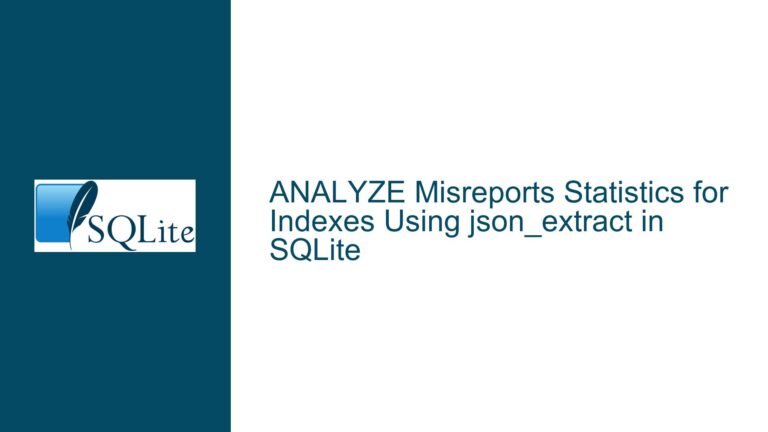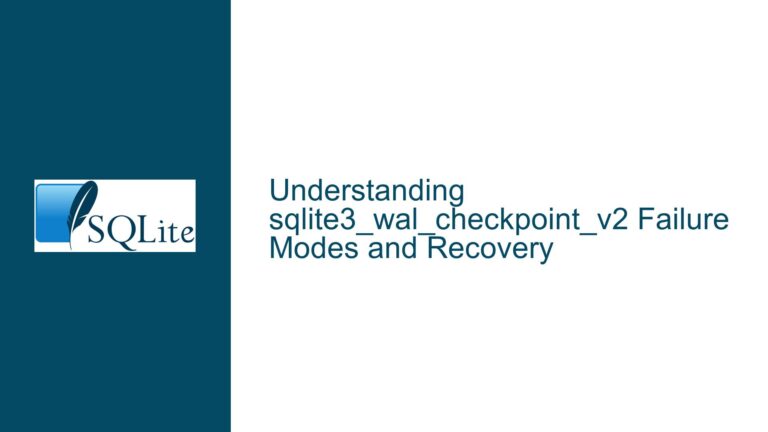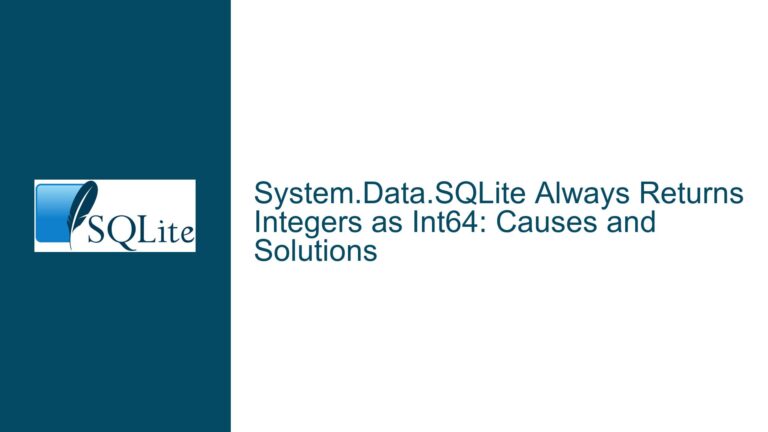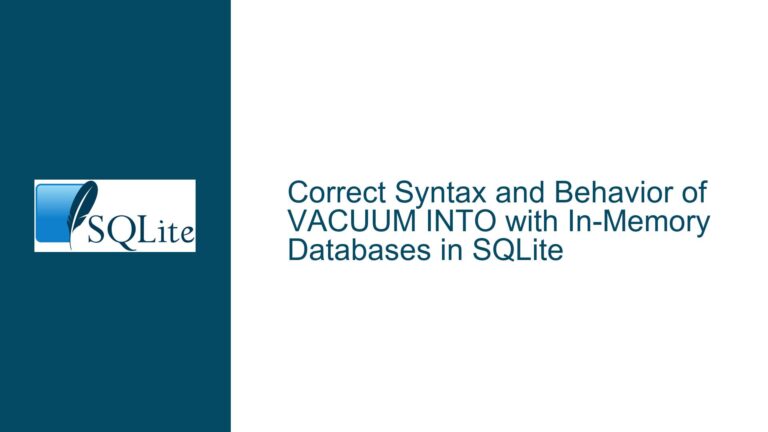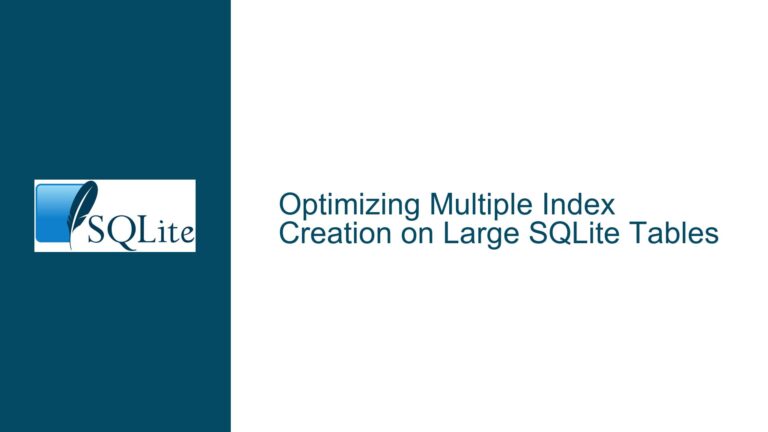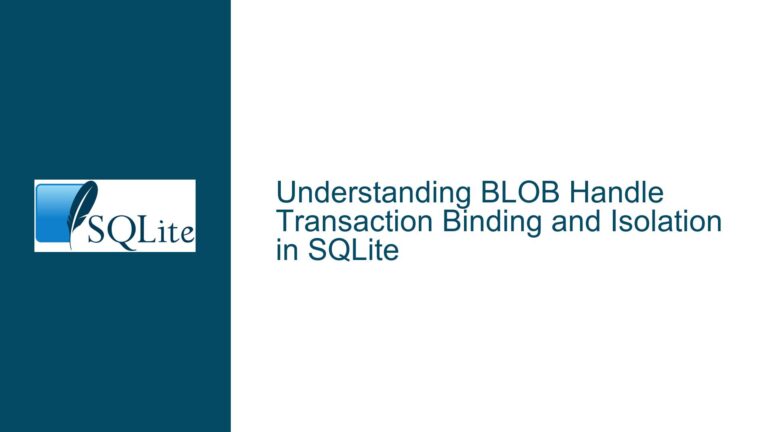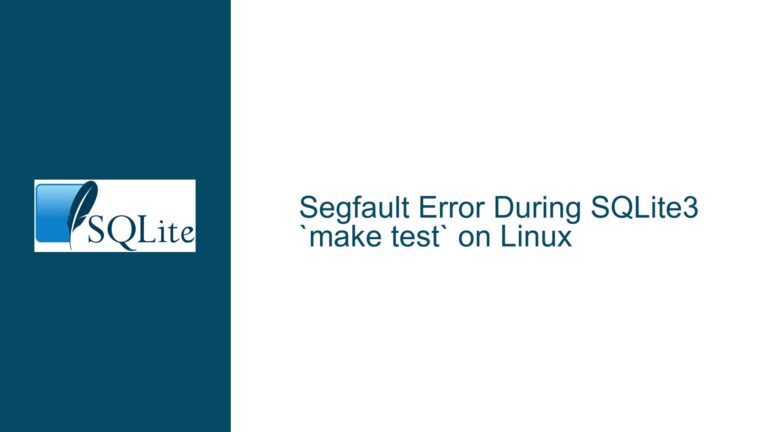ANALYZE Misreports Statistics for Indexes Using json_extract in SQLite
Issue Overview: Misleading Index Statistics from ANALYZE with JSON-Based Indexes When working with SQLite’s ANALYZE command to gather statistics for query optimization, users may encounter unexpected results when indexes involve JSON extraction functions like json_extract(). A common symptom is observing disproportionately low values in the sqlite_stat1 table’s stat column for indexes built on JSON fields….
